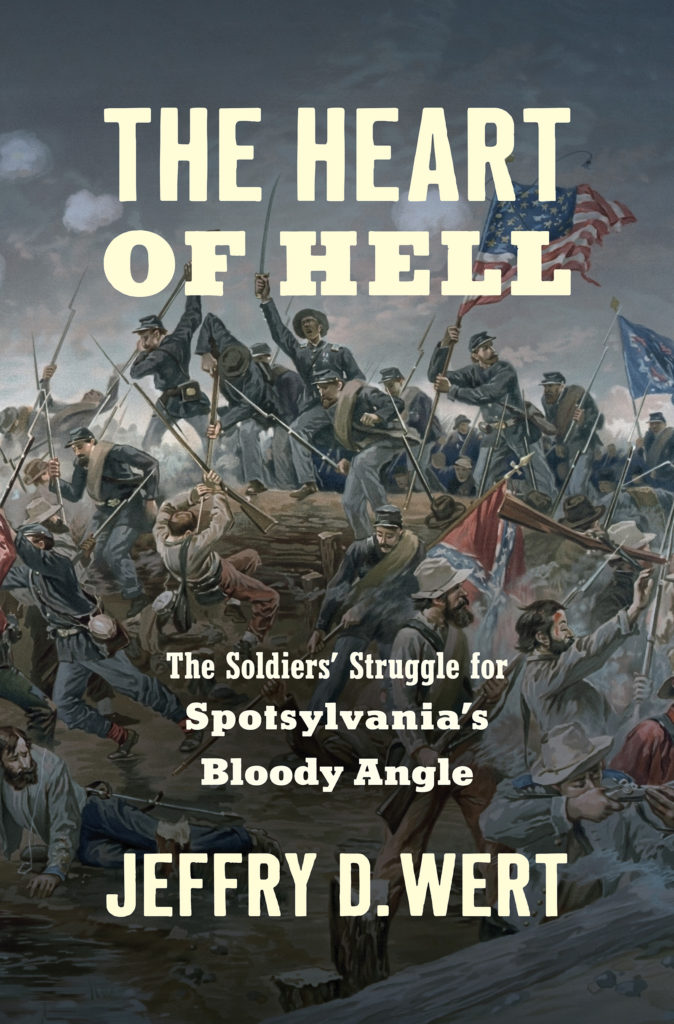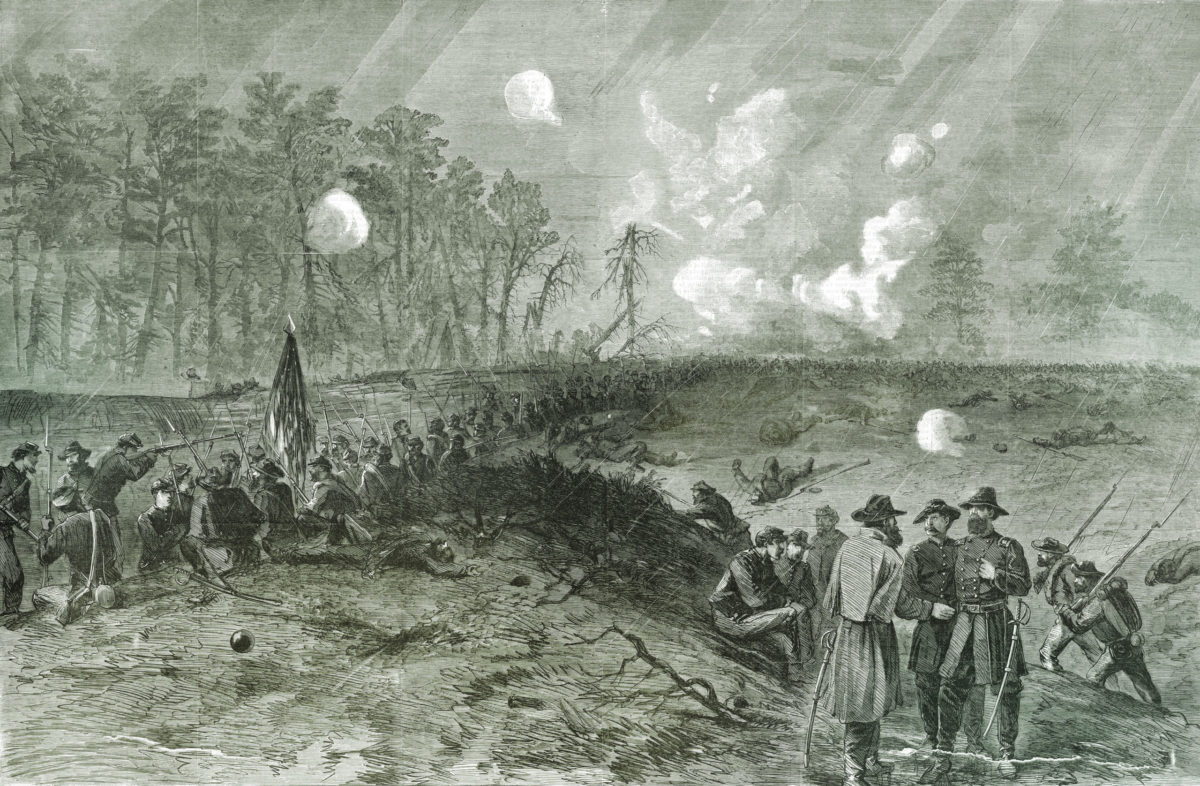The Battle of Spotsylvania Court House presents a challenge for writers that other battles don’t. For 24 hours, soldiers from the Army of the Potomac and the Army of Northern Virginia engaged in point-blank-range fighting in the pouring rain, and in mud over their ankles, in what became the most sustained hand-to-hand combat of the war. The May 12, 1864, fight quickly deteriorated into a death grapple, what John Haley of the 17th Maine called “a seething, bubbling, roaring hell of hate and murder.”
Every Civil War battle has its moments of intense fighting, and writers must find a way to capture the intensity of those experiences on the page. But Spotsylvania is different because it’s more—and not just a little more but by magnitudes—because of its duration, intensity, and proximity. “I have been in a good many hard fights, but I never saw anything like the contest of the 12th,” a Louisiana officer attested.
And so the question becomes: How much is enough to tell the story and how much is too much? The fighting that day in May 1864 was indeed too much in a war already overflowing with excess horror, and Wert could not have picked a truer title: The Heart of Hell.
Wert gets the balance exactly right, offering a graphic account of the violence without teetering into gratuitousness. He handles the grim material with dexterity, and while he allows readers to come up for air, he reminds us the battle itself was unrelenting, and so we plunge back in, time and time again, chapter after chapter, in a detailed account of “carnage infernal.”
In the early chapters, Wert summarizes Ulysses S. Grant’s ascension to command, the state of both armies on the eve of the spring campaign, the Battle of the Wilderness, and the first four days of fighting at Spotsylvania—including the preparation of the Confederate defensive line, which featured a large horseshoe-shaped bulge that eventually became known as the Mule Shoe Salient. Robert E. Lee called it a “wretched line,” yet allowed it to stand.
That’s a lot of ground to cover without getting lost, but Wert keeps the narrative moving, providing all the salient details—no pun intended—to prep the reader for the principal action to come: the fighting at the Mule Shoe and especially the Bloody Angle.
Among people and actions getting perfunctory treatment up front are Ambrose Burnside and the 9th Corps, but Wert does them justice in his account of the May 12 fighting, both in the morning action and in an ill-fated attack farther south a little later.
The fast pace begins to slow on page 65, where Wert lines Federals up near the Brown Farm, a mile north of the Mule Shoe, preparing to sweep forward in well-explained formation. Wert takes time to profile the various officers on both sides of the fight, but in the end, this is really a soldiers’ battle. “The long hours of combat belonged not to the armies’ senior leadership but to the captains, lieutenants, sergeants, and privates trapped within a seemingly godforsaken place,” he writes.
As the fight erupts and then grinds on, the Mule Shoe “acted as a billowing whirlpool, pulling more than thirty-two thousand Union attackers and upward of 13,500 Confederate counterattackers,” Wert says.
Grant comes off as almost recklessly out of touch with events on the front line, driven by an aggressiveness never before seen by the Army of the Potomac, which traditionally strove not to lose rather than to win. Lee, on the other hand, puts himself dangerously close to the front line because he has woefully misjudged his opponent.
Wert provides ample examples of the fighting in the trenches, which, according to one South Carolinian, “was plainly a question of bravery and endurance….”
The fighting at Spotsylvania goes on for another week after the battle at the Mule Shoe. Wert glazes over those events at top speed, but here he could have used a little more caution. For instance, he tells only half the story of the May 14 fighting on Myers Hill. “With [Emory] Upton’s repulse,” he writes, “the armies settled in for the night.” In fact, Army of the Potomac commander George Gordon Meade was nearly captured during Upton’s repulse and so, his dander up, he ordered significant portions of the Union 5th and 6th Corps to launch a counterattack. Confederates abandoned the hill—and then everyone settled in for the night.
Readers will feel some relief to see the Spotsylvania fighting begin to wind down. It is to Wert’s credit that he can weave together such a dark story in a way that keeps it moving while also insisting that readers bear witness. It is the soldiers’ struggle, and as Wert reminds us, it is a struggle unlike any other in the war.

The Heart of Hell
The Soldiers’ Struggle for Spotsylvania’s Bloody Angle
By Jeffry D. Wert, University of North Carolina Press, 2022
If you buy something through our site, we might earn a commission.






